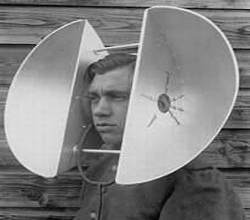
The tip stereocilia (at the end of the hair) is all-important in this process being covered with this interesting little protein, which is involved in both gluing the hair together and providing the electrical impulse.
Protochaderin-15 is one of the key proteins associated with the tip link.
How the gate mechanism actually triggers it is still being examined. Yet we do know that protocadherins abound in the central nervous system and that they have significant calcium to calcium adhesion capabilities.
Protochaderin-15 is also prevalent in areas where cell to cell electrical signaling is present throughout the human body. It also turns out that the tip link antigen can induce the production of special antibodies which bond protein to the stereocilia tips.
This appears to be why your hearing can recover a few days after prolonged exposure to loud noise. Tip links are literally reestablished by a reforming process that starts four hours after a bond has been broken.
Yet to complete the entire process, we need to add that neural processing takes place in the cochlear nucleus, somewhat akin to a biological D/A converter taking in the information from the inner ear.
Past this point a bundle of fibers (the mic snake) called the trapezoid body carry the information to brainstem. Ignoring the intricacies of the pathway, we then end up at some analog integrators providing sound localization in an area called the inferior colliculus.
Next step is the thalamus and the associated auditory cortex located smack in the middle of your brain.
The primary auditory cortex seems to take care of your pitch and rhythm, and perhaps filters out all those unnecessary sounds not really of interest. Who wants to listen to their own heart pounding?
Even Dr. House and his drill press are somewhat unsure of subsequent functionality, but major acoustic activity is generally associated with the temporal lobe of the brain called Wernicke’s area (or Area 22).
And that’s how it all works, or at least we think how it works today. Something to talk about on your next road trip.
It’s remarkable how many of the basic functions of the human body’s auditory system mimic that of our sound systems. I suppose that’s a bit backwards, but it is interesting how biology came to the same conclusions as we have, albeit a bit earlier in our developmental chronology.
So potassium and. calcium play a vital role in the quality of hearing. I remember my mother trying to coax me into eating a banana or a potato saying it would improve my hearing. I guess the milk might have had something to do with it as well. Turns out she was probably right.
Damn, the whole thing boils down to fruits and vegetables. Again.
John Mayberry has worked in and around the A/V business for more than a quarter of a century. Find him online at here.

